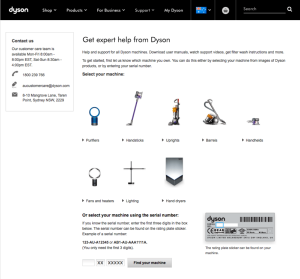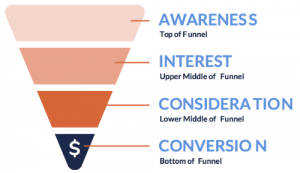— February 15, 2019
If you’re trying to make it easy for customers to call your business, you are probably using click-to-call ads in your paid search efforts. Click-to-call ads work great because it makes it a one-click affair for mobile searchers to call your business. But you may not know that with Facebook’s click-to-call feature, also known as “Call Now”, you can make it easy for customers who you are reaching through your Facebook advertising to call your business.
Here are five things you need to know to about Facebook Call Now ads to get the most out of your marketing dollars.
Facebook Call Now Ads Aren’t Just for Local Businesses
The Call Now click-to-call feature is part of Facebook’s Reach Ads toolkit, which helps businesses connect with customers who are close to their business location. By using Reach Ads with the Call Now CTA button, you can target people only within your service area. This allows you to only spend your ad dollars reaching people within your service area and prevents you from getting calls from people that won’t ever become customers.
Though Facebook Call Now ads are intended to reach local audiences, that does not mean they are just for mom-and-pop shops. Reach Ads let you connect with people at multiple business locations, so you can precisely target people who are near locations or localities that you service. This is great for home services companies that have their branches set up to serve particular cities, distributed insurance agencies that serve one state, and businesses like hotels that have many locations and get a lot of customers calling for information before booking a room.
Call Now isn’t the Only Way to Drive Calls from Facebook
While Call Now ads are great for many applications, if you’re in a considered purchase businesses like financial services, a customer who finds you on Facebook may not be ready to call you right then and there. You can also use Facebook ads and promoted posts with a different CTA button like “Get info.” From there, they can click to visit your website to get more information, like interest rates or product offerings, and then they can call your business from the number provided on your website. If you expect this type of traffic, though, make sure that your phone number is easy to see on every page and that it’s clickable from mobile phones.
However, when you direct your customers from Facebook to your website and expect them to call, you may be unintentionally creating a gap in your marketing data. Once the customer picks up the phone, you can’t tell that they engaged with your ad on Facebook and therefore won’t know if your spend there is effective.
Mind the Data Gap
So, when you send customers from your Facebook ad (or any digital campaign) to your website and then to the phone, it’s easy to see how you lose track of attribution for the call. But with Call Now ads, Facebook provides its own analytics that show you ad impressions, total spend, and how many people clicked the “Call Now” button. Problem solved, right? Not quite.
While you could potentially correlate those clicks to call volume, there is no 1-to-1 connection between any caller and the ad when using Facebook’s analytics on its own. This is not to mention that clicks don’t necessarily mean calls. Whenever someone clicks the Call Now CTA, Facebook records it as a call. But it is not a direct dial — it just brings up the dialer on the user’s phone, and they may not have ever actually made the call.
To bridge the data gap in both of these situations, you need to employ a robust call tracking and analytics solution.
Using Call Tracking with Facebook Click-to-Call
With an AI-powered call tracking solution like Invoca, you can get full attribution for all of your click-to-call campaigns on Facebook (as well as Google and Bing call extensions) and maintain a 1-to-1 relationship between your customer, their digital journey, and your advertising spend.
With Invoca, you can tell if that click of the Call Now button on Facebook equated to a call and whether or not it drove a sale. Our Signal AI predictive call analytics can detect the disposition of a call, allowing you to take the next best marketing action following the call automatically, in real time. That means if a caller makes a purchase, for instance, Signal AI detects that and sends the data to your marketing stack, allowing you to automate ad suppression for every customer, saving you money because you’re not paying for their eyeballs after they buy. Not to mention that people find it annoying getting bombarded with ads after making a purchase, so you’re also improving the customer experience.
Invoca also bridges the data gap when it comes to sending people from Facebook to your website for more information. If the customer calls after clicking on a Facebook ad and arriving on your website, our Facebook integration allows you to see every step of that journey and attribute the call and its outcome to the ad.
Optimizing Facebook Click-to-Call Ads
Like any form of digital marketing, Facebook Call Now ads require careful optimization to get the right people to call your business. Here are a few ways to make sure your call ads are more effective:
Facebook best practices apply: Keep your text under 90 characters, link titles under 25, and do not use text overlays in images.
Use call tracking data to optimize ads: If are getting a lot of calls from your ads that are not converting or that are driving service calls, you may need to adjust your ad copy or audiences.
Display ads at the right time: Make sure that you are displaying your call ads during business hours and during peak call times. Use call tracking data to determine the best times.
Test, test, test: Like all your marketing efforts, you have to throw a few things out there to see what works. The good thing is, when you’re using Invoca, you actually KNOW what works and what doesn’t, so there’s no guessing and your trial-and-error ends in results instead of more head scratching.
Get this on-demand webinar to learn more about how to use Invoca call tracking and analytics with Facebook!
Digital & Social Articles on Business 2 Community
(55)
Report Post





